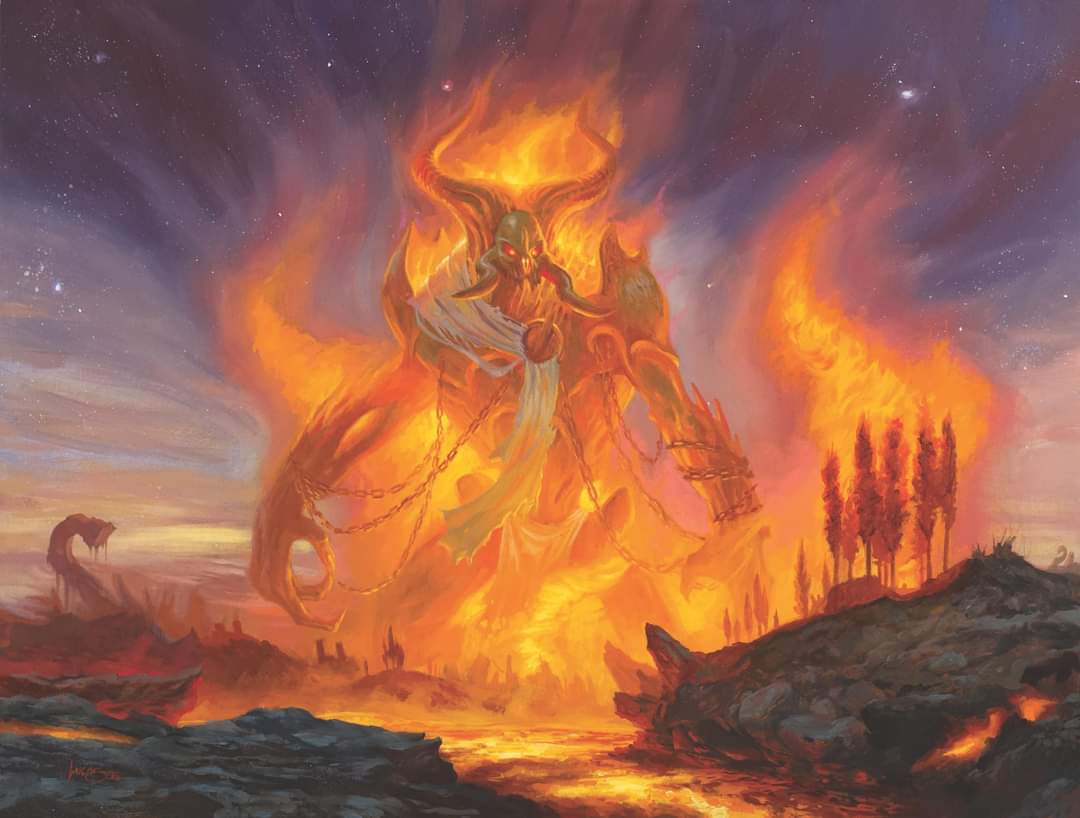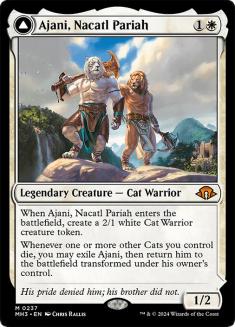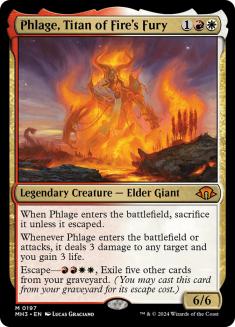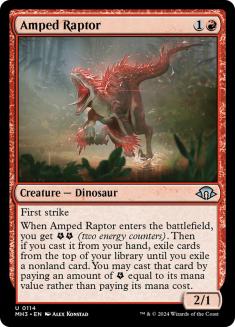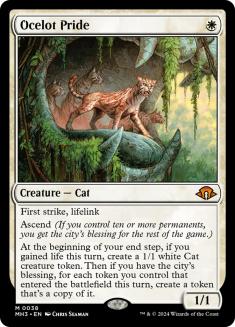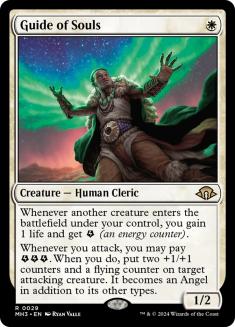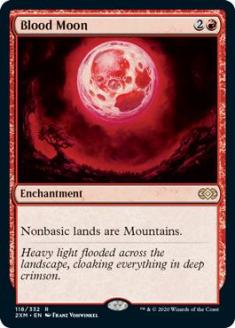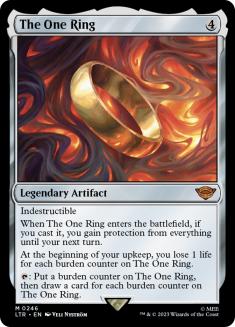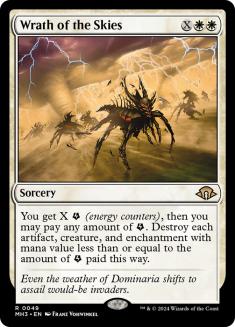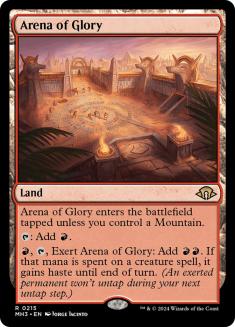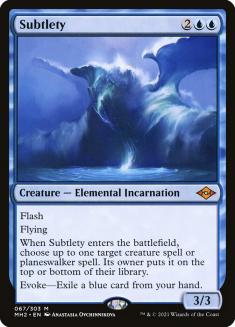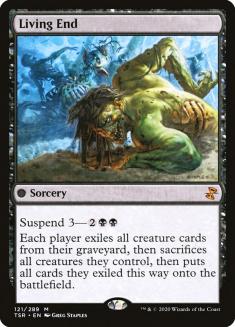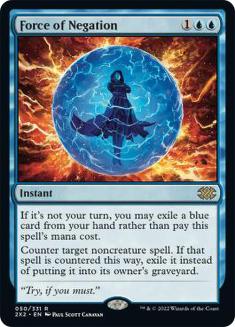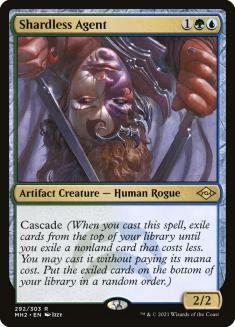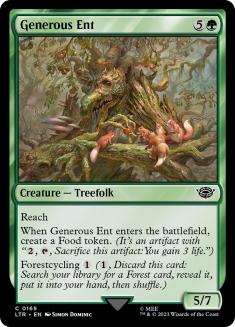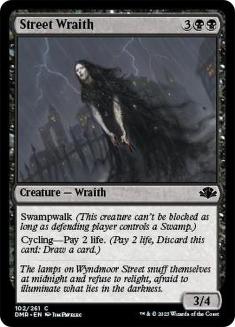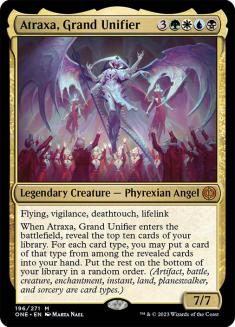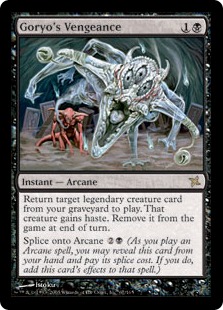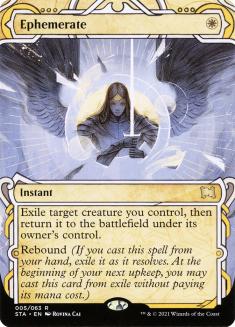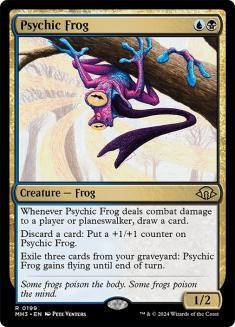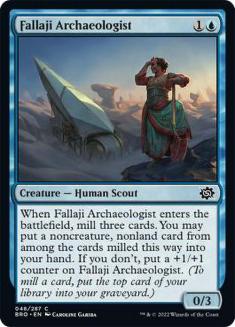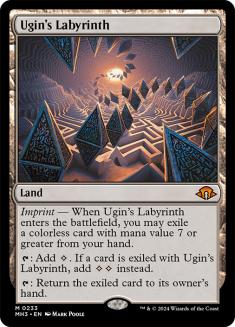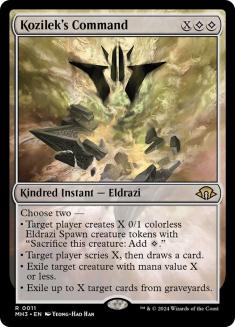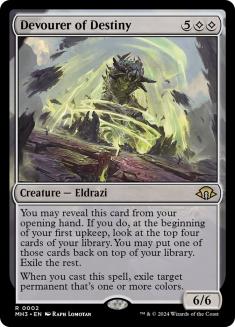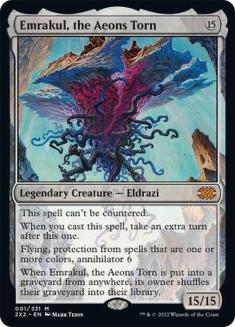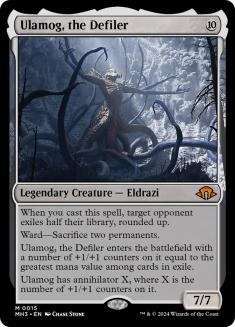It may be hard to believe, but there are only three weeks left in the Modern Magic: The Gathering Regional Championship Qualifier (RCQ) season!
Whether you’re still looking to pick up your first invite, on the grind to get your second, or just playing for fun, these five decks can help you achieve your goals!
Before we get started, note that the goal of this article is to help players make more informed deck selections for their remaining Modern RCQs, rather than simply providing a basic power ranking.
Let’s dive in!
Boros and Mardu Energy
Creatures (23)
- 3 Ragavan, Nimble Pilferer
- 4 Ajani, Nacatl Pariah
- 4 Amped Raptor
- 4 Phlage, Titan of Fire's Fury
- 4 Guide of Souls
- 4 Ocelot Pride
Lands (22)
Spells (15)

Since the banning of Nadu, Winged Wisdom and Grief, Boros Energy (and its Mardu counterpart to an extent) has risen to become the top dog in Modern. With consistent results in both paper and online play and few truly bad matchups, it’s an easy choice for many players to simply pick up and go. That being said, piloting the format’s best deck isn’t without its own set of challenges.
When playing a deck as popular as Boros Energy, it’s safe to assume that everyone in the room knows what you’re doing and will have a gameplan specifically for it. For many, this means allocating a greater number of slots in the sideboard for the matchup, but for a deck as prevalent as Boros Energy, don’t be surprised if you run into maindeck hate or even decks designed specifically to beat you.
Another challenge you’re likely to face is an increased number or mirror-matches. When learning the best deck in any format, it’s almost mandatory to prioritize practicing the mirror before tackling any other matchup. If there are ten players on Boros Energy at your 30-player RCQ, and you’re the one who didn’t practice navigating the mirror, that puts you at a huge disadvantage against a large percentage of the room.
That being said, Boros/Mardu Energy is the format’s best deck for a reason. Inexperience can often be off-set by the sheer power and speed of the deck, and if you’re willing to put in the time to practice the mirror and don’t mind having a big target on your back, it’s a great choice for closing out this Modern RCQ season with a win.
Jeskai Control
Creatures (7)
Planeswalkers (2)
Lands (22)
Spells (29)

Combining the powerful energy cards from Modern Horizons III with the format-defining The One Ring, Jeskai Control (or Jeskai One Ring Control) established itself as the format’s premier control deck after an impressive Top 8 showing in the hands of Javier Dominguez at Pro Tour Modern Horizons III, an event dominated (and ultimately won) by Bant Nadu.
Following the Nadu ban, Jeskai Control has maintained a modest popularity by preying on creature-heavy decks like Boros Energy and Golgari Yawgmoth, while also having fair game against many of the format’s slower strategies. Cards like Wrath of the Skies, Galvanic Discharge, and Counterspell help keep the battlefield clear of threats while you work towards resolving the deck’s namesake card — The One Ring.
Having won an RCQ this season playing Jeskai Control, I can personally attest to the fact that resolving a single copy of The One Ring was typically enough to turn the tide of most games, and multiple copies was often a knockout blow. The card is simply incredible in the Jeskai shell, and I intend to play it until Wizards of the Coast says otherwise.
That being said, Jeskai Control is far from perfect, and there are some matchups that feel absolutely dreadful – namely Eldrazi Tron and Through the Breach. Both decks have the potential for explosive draws, and Game 1 your removal package is essentially useless. Not to mention cast triggers and Cavern of Souls invalidating your counterspells…
So if you’re heading into an event where you expect there to be a large amount of Eldrazi decks, Jeskai Control is probably not the best choice. If you’re planning for an unknown metagame or a large tournament like those at SCG CON or NRG however, I think Jeskai Control is still a strong contender, especially now with the prevalence of Boros and Mardu Energy.
Living End
Creatures (29)
- 4 Street Wraith
- 4 Shardless Agent
- 4 Curator of Mysteries
- 1 Striped Riverwinder
- 3 Waker of Waves
- 4 Subtlety
- 4 Endurance
- 1 Colossal Skyturtle
- 4 Generous Ent
Lands (14)
Spells (17)

As they say, you cannot kill what’s already dead. Despite the banning of Grief and Violent Outburst, Living End continues to put up results thanks to the determination of its playerbase.
After losing Violent Outburst, most Living End decks simply adjusted their mana base to support Ardent Plea as a cascade replacement, and the rest was just business as usual: dump big things in the graveyard, cascade into Living End, protect big things with Force of Negation, win.
In recent weeks, Living End has quietly put up several solid finishes in various Magic Online events, as well as tabletop RCQs in my area. This is likely due to a decrease in decks with access to counter magic, as well as many lists trimming graveyard hate from the sideboard and finding themselves unprepared for the matchup.
If you’re a Living End fan, these last few weeks of the RCQ season may just be your time to shine. Just watch out for Chalice of the Void.
Esper Goryo’s Vengeance
Creatures (18)
- 2 Solitude
- 4 Fallaji Archaeologist
- 4 Atraxa, Grand Unifier
- 4 Psychic Frog
- 2 Ulamog, the Defiler
- 2 Emperor of Bones
Lands (20)
Spells (22)

While on the topic of graveyard decks, Esper Goryo’s Vengeance is one that can really punish a room unprepared for it.
Whether you’re considering playing this deck or not, it’s important to understand its gameplan, which is using the deck’s namesake card, Goryo’s Vengeance, to return a legendary creature (usually Atraxa) from the graveyard to the battlefield as early as Turn 2 (thanks to surveil lands), at which point you’ll gain ridiculous card advantage, and then attack before it’s exiled at the end of your turn.
While this sequence is strong by itself, the real power of the deck comes from combining an early reanimation effect with Ephemerate to exile your resurrected creature and then return it to battlefield sans the self-exiling clause from Goryo’s Vengeance.
Despite their popularity, decks like Boros Energy, Through the Breach, and various big mana strategies are just not equipped with the right interaction to handle the explosiveness of Esper Goryo’s Vengeance, and often times an early resolved Goryo’s on Atraxa or Griselbrand is enough to win Game 1. As mentioned in the section above, many decks have trimmed their sideboarded graveyard hate down to one or two cards (usually Soul-Guide Lantern or Surgical Extraction), which is hardly enough to consistently swing a matchup in their favor. Additionally, some games can be won through fairer means thanks to Psychic Frog. Early hand disruption followed up by an uncontested Frog can close games surprisingly fast.
The downside to this deck (and just about any graveyard strategy) is that a greater number of games will be decided by variance. Often times you’ll end up with all the right cards in your graveyard, but never hit a reanimation effect, or vice-versa. For some, that increased variance can be a major turn off, but based on the trends mentioned above, I would still consider this deck to be a top contender among those looking to spike their next RCQ.
Eldrazi Breach
Creatures (14)
Lands (22)
Spells (24)
- 4 Through the Breach
- 4 Talisman of Impulse
- 4 All Is Dust
- 4 Ancient Stirrings
- 4 The One Ring
- 4 Kozilek's Command
Sideboard

I’ve mentioned the Eldrazi Breach deck several times throughout this article, so it’s only fair I include it before I wrap things up.
Being a fan of both ramp and combo(ish) strategies, Eldrazi Breach appeals to me greatly, and had I not already owned the cards for Jeskai Control, I likely would have played it this season.
Like many of Modern’s current top decks, the release of Modern Horizons III gave Eldrazi Breach a ton of tools that helped it gain a foothold in the format. Cards like Ugin’s Labyrinth, Kozilek’s Command, and Sowing Mycospawn really propelled the archetype forward into a space somewhere between a ramp and combo.
With much of the format’s interaction focused on smaller threats, Eldrazi Breach can essentially ignore what their opponent is doing and simply end games by casting Through the Breach ahead of curve to put a huge Eldrazi into play. This gameplan is a double-edged sword however, as the lack of early-game interaction can lead to situations where opposing battlefields can get out of hand and overwhelm you before you’re able to cast Through the Breach or amass enough mana to stabilize.
Despite its flaws, Eldrazi Breach can steal wins from just about any matchup and is extremely flexible. Sometimes the deck can just ramp, hit land drops, cast The One Ring, and then start hard casting huge Eldrazi each turn to bury opponents in cast triggers and big bodies. Ultimately, it’s this versatility that makes the deck an appealing choice heading into the last few RCQs of the season.
Honorable Mentions
A big part of what makes Modern great is how deep the pool of competitive decks goes, and while I’d love to cover each one, there’s simply not enough time in the day! That being said, the least I could do was provide a few honorable mentions and let you come to your own conclusions about them!
Creatures (11)
Lands (30)
Spells (20)

Creatures (10)
Lands (21)
Spells (29)

Creatures (14)
Lands (15)
Spells (31)

Creatures (12)
Lands (19)
Spells (29)

Creatures (30)
- 4 Viscera Seer
- 3 Wildgrowth Walker
- 4 Gilded Goose
- 4 Cauldron Familiar
- 1 Endurance
- 1 Haywire Mite
- 2 Delighted Halfling
- 2 Orcish Bowmasters
- 4 Samwise Gamgee
- 1 Cenote Scout
- 4 Amalia Benavides Aguirre
Lands (21)
Spells (10)
Sideboard

Choosing What’s Best For You
While it’s common for competitive players to naturally gravitate to what’s considered the format’s best deck, that may not be the best deck for you. Even in the weeks following the release of Modern Horizons III, when the now banned Nadu, Winged Wisdom was obviously the most powerful thing to be doing in Modern, many players opted to explore other avenues for the first weeks of the RCQ season.
For some players, the decision to not play Nadu was a matter of not wanting to invest hundreds of dollars in a deck helmed by a card that was clearly not long for the format. Others refused the bird simply based on principal or because they preferred to play decks that they already owned – whether that be for budget reasons, comfort level, or both.
Long story short, plenty of RCQs during Nadu’s reign of terror were won by other decks, so don’t feel obligated to play a deck you’re not comfortable with just because it’s considered the best. Pick a deck that works best for you and enjoy the ride.
I wish you all the best of luck in the remaining weeks of the season and hope this article helps you achieve your RCQ goals!

